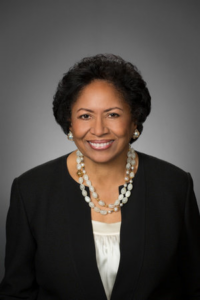From the farmland of East Texas to Houston’s Fifth Ward to New Orleans at the dawn of the civil rights movement, Ruth J. Simmons depicts an era long gone but whose legacies of inequality we still live with today. Written in clear and timeless prose, Up Home is both an origin story set in the segregated South and the uplifting chronicle of a girl whose intellect, grace, and curiosity guide her as she creates a place for herself in the world.
1
Crossroads
I was born at a crossroads: a crossroads in history, a crossroads in culture, and a geographical crossroads. In North Houston County in East Texas, just a few miles from where the Trinity River separates Houston County from Leon County and the town of Grapeland from Oakwood, is a small community called Daly. The last of my parents’ twelve children, I was born there in 1945. Delivered by midwife Addie Bryant in my family’s small, dilapidated house, I entered the world near my maternal grandparents’ sixty-acre homestead off Texas Highway 227.
The nearest town of any size, where my family could make purchases and transact business, was fifteen miles away and accessible only over dirt roads that could easily wash out during downpours. Going to Grapeland, where there were schools, paved streets, a general store, a bank, and even a movie theater, would have been tantamount to glamorous long-distance travel had it not been for the difficulties of navigating hilly, unpaved roads in a horse-drawn wagon. Using this crude mode of transportation, we would occasionally go “to town” if we could not purchase an essential item via the Sears catalog. The unsteadiness of the wagon when crossing creeks on makeshift lumber bridges or struggling to climb hills on clay subsoils often terrified me. But at the end of this perilous journey, Grapeland, the first stop in my effort to learn about the world and the center of all promise, awaited.
In this small town, we would see people from around the region who seemed so different from people on the Daly farms, where my parents were sharecroppers. Dressed in store-bought clothes instead of rough burlap, walking freely around the town, and entering establishments through the front door, whites possessed a freedom and power that were distant from what we knew, and it was fascinating to observe them. They were like characters from the fantastical animal fables my father told us come to life in human form. There was “Bruh” Rabbit hurrying mischievously about and the sly fox skulking in doorways, ready to outwit everyone. These characters fascinated me and made me want to see more of life than I could see in Daly. My intellectual and cultural wanderlust began on these infrequent trips to Grapeland, a town established in the late nineteenth century that became known as the crossroads of the region. My wanderlust would grow over time and eventually take me far from East Texas, first via my imagination and books and, ultimately, in reality.
Grapeland’s first name, The Crossroads, reflected its location at the junction of two roads, one that led north from Crockett, the county seat, to Palestine, a commercial center for North Houston County. The other led west from Augusta toward the banks of the Trinity River. When the number of settlers grew and the site needed a more formal name, the town became Grapevine, but the Houston and Great Northern Railroad, which had built a railroad through the town in 1871, renamed it Grapeland, after the area’s troublesome and ubiquitous grapevines.
The cheap, rich soil in the Daly area encouraged my maternal grandparents, Richard Campbell and Emma Johnson, to settle there in the 1880s. I am left to imagine what could have impelled the young couple to set off from Mississippi with such a mission, but in the era of their exodus, the Southwest must surely have offered greater safety and opportunity for Blacks. Emma was born after slavery ended officially, and nothing is known of the family members she left in Mississippi, as she never spoke of them. Richard came originally from Virginia. He was born around 1870 to Martha Leonard and Andrew Campbell, both of whom had been slaves. Martha’s two boys, Doc and Richard, had different fathers, a fact that was apparent from their features. Doc was very dark with prominent Negroid features, and Richard was very fair with Caucasian features. The Campbell boys gradually worked their way south to Mississippi, where Richard met Emma and the three set off together on a boat for Texas. They landed in Oakwood, an East Texas town founded in 1870 on the Trinity River, across from Daly.
After arriving in Oakwood, Emma and Richard soon made their jump-the-broom marriage legal by remarrying and recording their union in the Leon County courthouse. Their Holy Union of Matrimony took place on August 19, 1891, nine days after they had secured their marriage license, with Reverend Frank Lloyd, an ordained minister, officiating. The same “Minister of the Gospel” officiated when Doc married Bella Tryon, his second wife, two years later. Together, in 1910, Richard and Doc bought sixty acres of farmland situated sixteen miles northwest of Crockett in Daly. The purchase, made jointly with their wives for three hundred dollars, required diligent planning, saving, and no small amount of ambition.
It is easy to see why Richard, Doc, Emma, and Bella crossed the river to farm in tiny Daly, where expansive cotton fields were surrounded by red oak and post oak trees and transected by creeks. Without a town center, the area was home to homesteads large and small that depended on Grapeland and other towns for many needs. The absence of a busy town center gave Daly a quiet, peaceful character in a setting of gently rolling hills and verdant, fertile fields. Even today when I visit the area, I am taken aback by the beauty of the landscape, despite its deteriorating homes and farm buildings and overgrown fields.
The creeks were sites of much childhood enjoyment and religious rituals. Many baptisms took place in them before the churches built baptismal fonts. “When we gather by the river . . . The beautiful, beautiful river . . .” wafted over the congregants when ministers baptized children, submerging them quickly in the water with their noses and mouths covered. Terrified children, dressed in white, momentarily resisted the minister’s efforts, but the brief ceremony was over before they could prevent the submersion, no matter how much they struggled. These creeks were also where children gathered outside their parents’ sight to swim. Among the few opportunities for sports, the waterways afforded boys the opportunity for swimming, while girls were often discouraged from similar activities. The water could also evoke great fear when it rose during downpours, washing out bridges and spooking horses that were pulling wagons over slippery roads. One particularly terrifying moment of my childhood was having to descend from our wagon so that it could cross a creek without the weight of passengers. Even today, so many years later, I can recall how traumatized I was by that experience.
My mother, Fannie Campbell, was born on this beautiful land in 1906. She met and married my father, Isaac Stubblefield, there and bore all of her children within a few miles of her parents’ home. A devoted creature of this intimate landscape, she traveled only to Grapeland, Oakwood, and, occasionally, county fairs in the region. For much of her life, she had only horses and wagons as transport and, after our family acquired an automobile, she never learned to drive. Her marriage also circumscribed her movements; she followed the many relocations prompted by my father’s employment first as a farmhand and sharecropper and, later, as a laborer in Houston.
Today, at the point where the paved section of Route 227 abruptly changes into hardened pebbly clay leading toward Cedar Branch, another Grapeland-area community, a meandering climb to the left leads to the top of a cattle-grazed knoll where a small, weather-worn house once looked out over the fields below. With no street addresses, houses and properties often acquired the names of former owners or inhabitants. My father had moved our family to the house previously inhabited by Eddie Bryant, a local farmer, and there I was born after the end of World War II.
I have no personal recollection of the Eddie Bryant house because a couple of years after I was born our family moved to the Murray Farm, working the Murrays’ cotton fields. Because I can drive from Grapeland to Daly in only ten or fifteen minutes, the isolation of the Murray Farm and other sites in Daly when I was a child is difficult to imagine today. Yet, in the twenties, thirties, and forties, round-trip travel from the area to Grapeland and back would have taken the better part of a day, making it impossible to go there with any frequency.
The Murray Farm was a village unto itself, with its own convenience store and a sanctified church and school close by. Sharecroppers typically bought on credit from the farm store, where mounting indebtedness to the owners often could not be satisfied. I was too young to be aware of the dire economic factors affecting sharecroppers. Like other families, we had a farm-owned house and a modest amount of space for a garden and chickens. These accommodations met our basic needs. All sharecroppers enjoyed the same state and, having this in common, they generally got along well and built friendships on the basis of their shared circumstances. We were especially close to our nearest neighbors on the farm: Miss Lula May, Miss Florida, and Miss Sis. While I do not recall knowing many sharecroppers, their colorful names continued to live in family lore long after we moved away, perhaps because they typified the proclivity of Blacks to give their children names such as Mr. Son, Baby Girl, Mr. Junior, Mr. Brother, and so on.
Copyright © 2023 by Ruth J. Simmons. All rights reserved. No part of this excerpt may be reproduced or reprinted without permission in writing from the publisher.

© Gittings
Ruth J. Simmons is the former president of Smith College, Brown University, and Prairie View A&M University, Texas’s oldest HBCU, and the former vice provost of Princeton. She earned her bachelor’s degree from Dillard University and her master’s and doctorate from Harvard in Romance languages and literatures. The president of France named her chevalier of the French Legion of Honor and President Biden named her to the White House HBCU Advisory Board. She lives in Texas.






